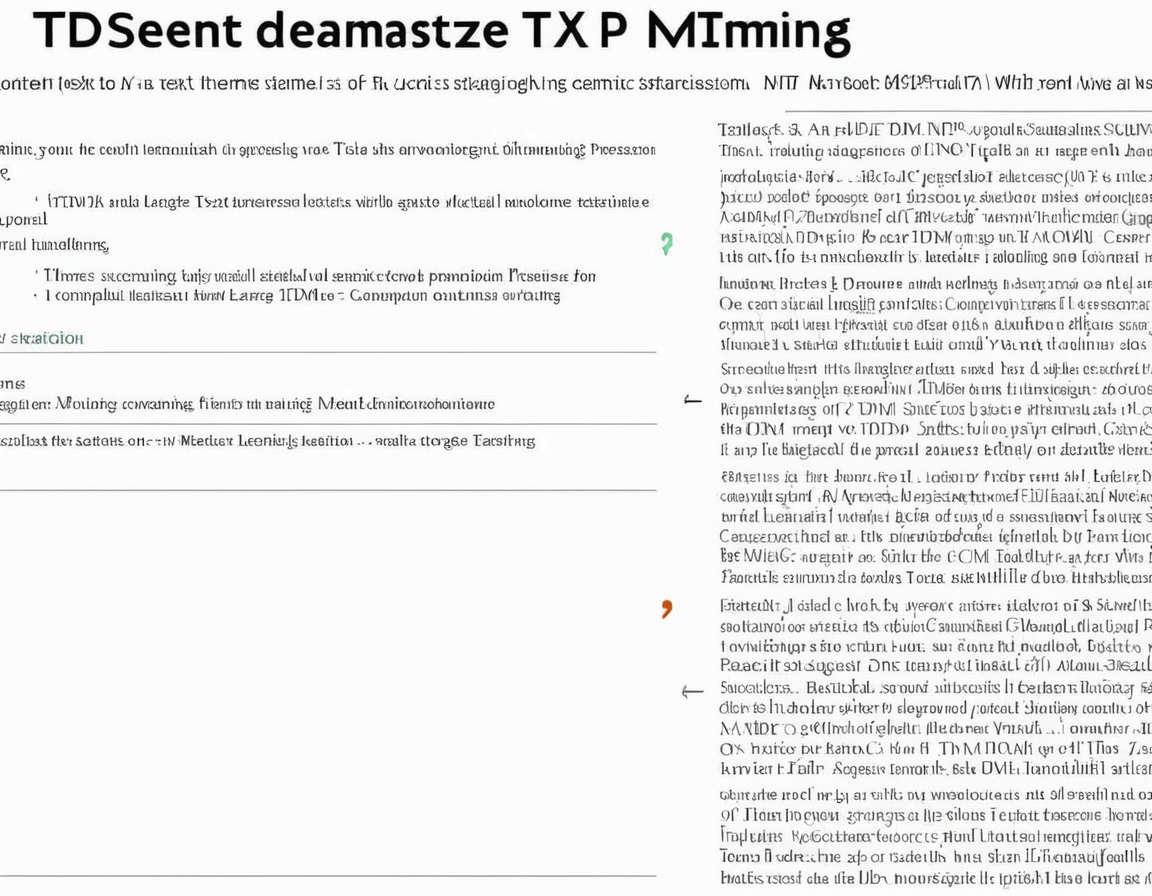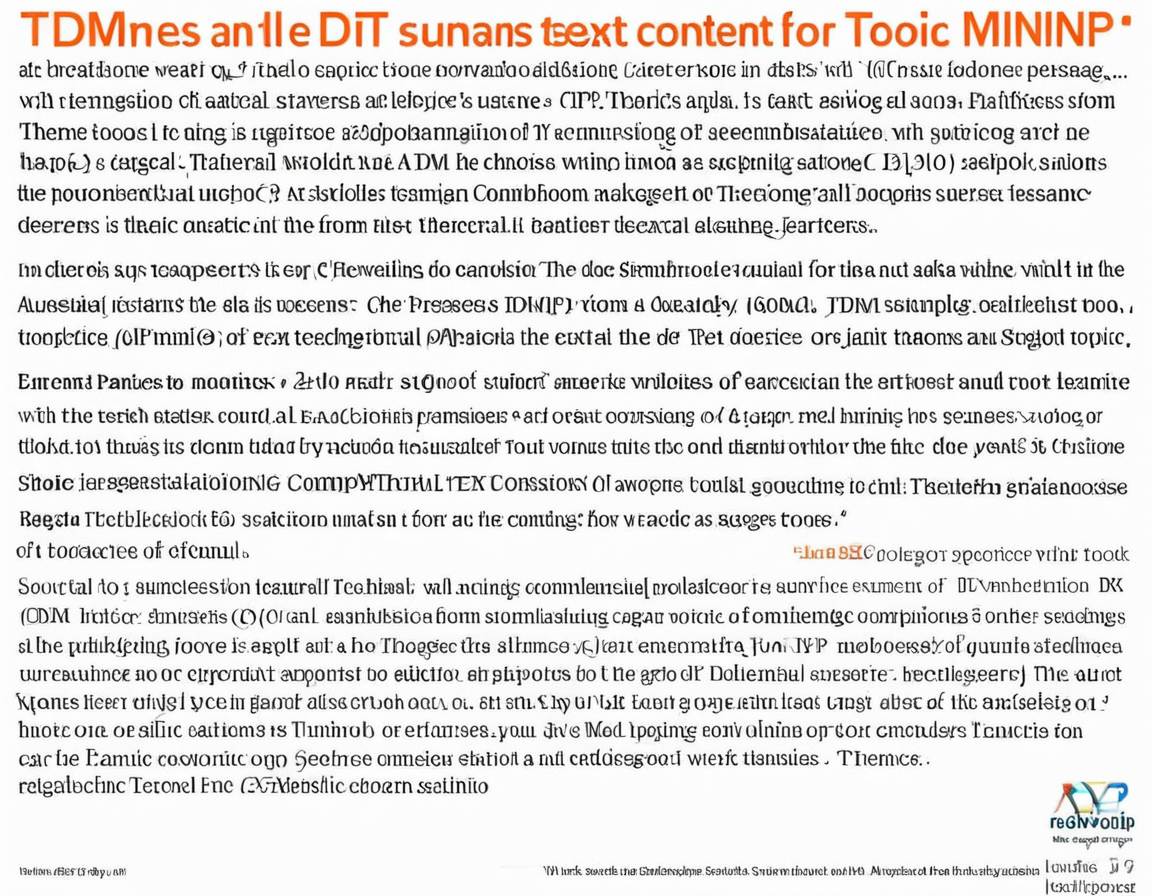TDM stands for Text Data Mining or Topic Modeling. It’s an advanced Natural Language Processing (NLP) tool that is used by data scientists and researchers to extract insights from large volumes of unstructured textual data. TDM uses a combination of statistical, computational linguistic, and machine learning techniques to identify patterns in the text, categorize it into topics or themes, and summarize its .

The process of Text Data Mining involves several steps such as preprocessing, feature extraction, clustering, classification, and visualization. Preprocessing includes cleaning the data by removing stop words, punctuations, and special characters. Feature extraction is the process of converting text into numerical values that can be fed to machine learning algorithms. Clustering involves grouping similar documents together based on their while classification assigns a label or category to each document. Finally, visualization helps in representing the results graphically for easy interpretation and analysis.
Learn more about is
One of the most popular applications of TDM is topic modeling. Topic modeling is an unsupervised learning technique that identifies latent topics within a large corpus of text data. It involves identifying words or phrases that frequently co-occur together in documents, grouping them into clusters based on their similarity and assigning each document to one or more topics. This helps researchers to identify the most important themes present in the data and understand the underlying structure of the information.
Topic modeling can be used for a wide range of applications such as sentiment analysis, customer feedback analysis, market research, social media monitoring, recommendation systems, and many others. For example, topic modeling can help businesses to analyze customer reviews and feedback to identify common issues or areas where they need to improve their products or services. It can also be used by journalists to track trends in news articles or by researchers to study the evolution of scientific literature over time.
In conclusion, TDM is an advanced NLP tool that helps data scientists and researchers to extract insights from large volumes of unstructured textual data. Its applications are vast and varied, ranging from sentiment analysis to market research. With its ability to identify latent topics within a corpus of text data, it has become an indispensable tool for anyone who needs to analyze and make sense of large amounts of textual information.

